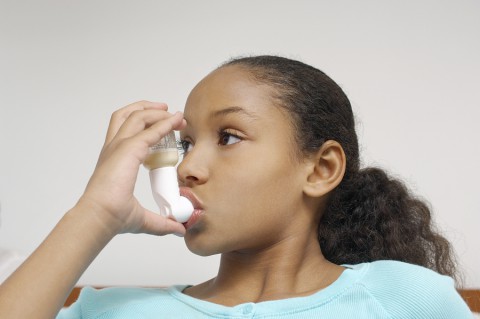 Researchers from Columbia University report that children with elevated levels of BPA in their bodies at an early age have an increased occurrence of asthma by age 12. Even at low doses of BPA, there was an increase in asthma cases. The study included 568 participants. An earlier study conducted by Penn State found that asthma symptoms in children may be linked most closely to first trimester exposure.
Researchers from Columbia University report that children with elevated levels of BPA in their bodies at an early age have an increased occurrence of asthma by age 12. Even at low doses of BPA, there was an increase in asthma cases. The study included 568 participants. An earlier study conducted by Penn State found that asthma symptoms in children may be linked most closely to first trimester exposure.
UC Davis researchers underscored potential dangers of BPA most recently when testing BPA exposure in macaques. These primates are frequently used in testing because their reaction to environmental toxins such as BPA mimics a human response. In the UC Davis study, BPA exposure affected lung development on a cellular level predisposing juveniles to asthma. The permanent altering of lung tissue development is the most provocative finding to date linking BPA to irreversible lung disease.
The Centers for Disease Control and Prevention reports that 1 in 10 children suffer from asthma. Approximately 185 children and 3000 adults die from asthma-related deaths annually. Asthma cases increased dramatically in the 1980’s and new incidents continue to rise. While increased urbanization and its related air pollution are partly to blame, scientists have long suspected other factors.
Together, these recent findings shed new light on the role environmental toxins have on human lung development. In addition, the research will lead to other studies such as how the cumulative effects of exposure to other chemicals in plastics may also play a role in child development. In the meantime, several countries are working toward ending childhood exposure to BPA.
In January 2013, France passed legislation banning BPA in all food containers. The new policy will be phased in to allow industry to shift production methods, until then, many products marketed to pregnant women or young children will require additional labeling.
Responding in part to citizen action groups, the European Union has enacted a ban on BPA in baby bottles, as has China and the United States. Canada has classified BPA as a toxic substance. Individual states, such as California, have extended the ban to include a wider range of products. Although BPA was removed from many baby products, it persists in canned food lining, some register receipts, dental sealants and a miscellany of other plastic products, many of which are marketed to children.
In light of recent studies, consumer pressure in the United States and other countries may continue to play an important role in an industry shift away from BPA use for food-related and child-related products.
Additional references:
http://www.scientificamerican.com/article.cfm?id=new-study-links-bpa-and-childhood-asthma
http://www.cdc.gov/asthma/asthma_whatsnew.htm
http://www.aaaai.org/about-the-aaaai/newsroom/asthma-statistics.aspx
http://www.consumerreports.org/cro/news/2011/10/california-joins-10-other-states-in-banning-bpa-from-infant-feeding-containers/index.htm









